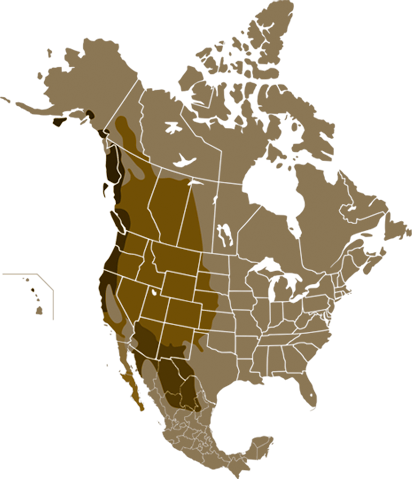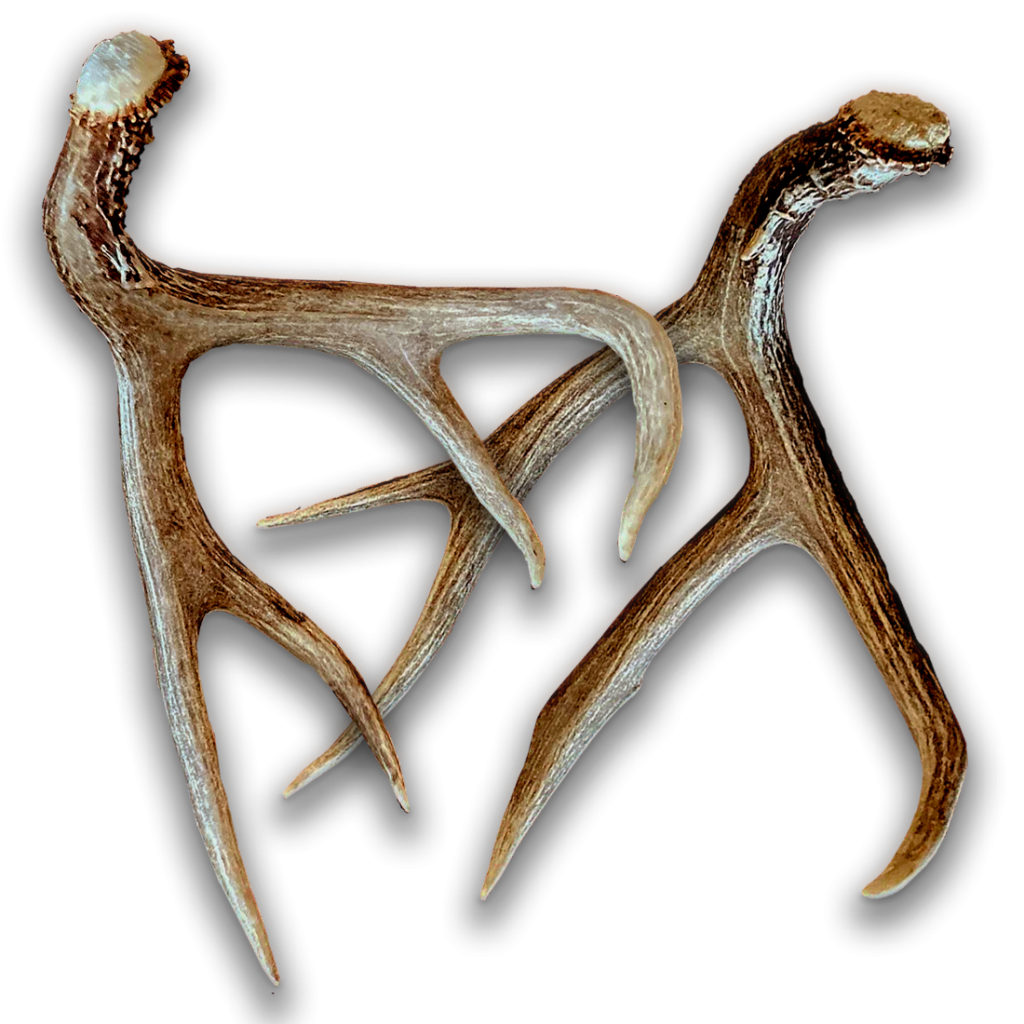
Range
North America
Mule Deer
Odocoileus hemionus
Mule deer can be divided into two main groups: the mule deer (Sensu stricto) and the black-tailed deer. The first group includes all subspecies, except O. h. columbianus and O. h. sitkensis, which are in the black-tailed deer group. The two main groups have been treated as separate species, but they hybridize, and virtually all recent authorities treat the mule deer and black-tailed deer as nonspecific.
Mule deer apparently evolved from the black-tailed deer. Despite this, the mtDNA of the white-tailed deer and mule deer is similar, but differs from that of the black-tailed deer. This may be the result of introgression, although hybrids between the mule deer and white-tailed deer are rare in the wild (apparently more common locally in West Texas), and the hybrid survival rate is low even in captivity.
Many claims of observations of wild hybrids are not legitimate, as identification based on external features is complicated.
Mule deer migrate from low elevation winter ranges to high elevations summer ranges. Although not all individuals in populations migrate, some will travel long distances between summer and winter ranges. Researchers discovered the longest mule deer migration in Wyoming spanning 150 miles from winter to summer range Multiple US states track mule deer migrations.

Mule deer migrate in fall to avoid harsh winter conditions like deep snow that covers food resources, and in spring follow the emergence of new growth northwards. There is evidence to suggest that mule deer migrate based on cognitive memory, meaning they use the same path year after year even if the availability of resources has changed. This contradicts the idea that animals will go to the areas with the best available resources, which makes migratory paths crucial for survival.
Name Origin
The mule deer gets its name from large ears. Mule deer bucks shed their antlers in winter, growing new ones annually. In November with the males’ antlers now fully mature and worn free of velvet, the deer rut begins. Unlike elk, mule deer do not collect harems or bugle during mating season. Mule deer are primarily browsers, although they feed largely on forbs and new grass.



